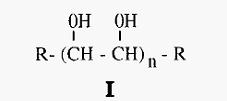
Fractional precipitation with polyethylene glycol
 المؤلف:
Clive Dennison
المؤلف:
Clive Dennison
 المصدر:
A guide to protein isolation
المصدر:
A guide to protein isolation
 الجزء والصفحة:
الجزء والصفحة:
 17-4-2016
17-4-2016
 1365
1365
Fractional precipitation with polyethylene glycol
Polyethylene glycol (PEG) (I) is a hydrophilic polymer. It is commercially available as preparations of different average molecular weights, the 6,000 and 20,000 materials being most often used for protein isolation.

It is thought that PEG precipitates proteins by virtue of excluding the proteins from a relatively large volume of water per PEG molecule. With an increase in PEG concentration the protein is thus eventually brought to its solubility limit. It has been empirically observed that, at equimolar concentrations, large proteins are precipitated at lower PEG concentrations than small proteins. For this reason PEG precipitation is especially suited to the isolation of large proteins and even particles, such as viruses. PEG-precipitation may thus be thought of as “molecular exclusion precipitation”.
The effect of protein concentration has not been explored in detail but it would appear from limited data that in PEG precipitation proteins behave much as type I proteins do in salting out, i.e. the higher the protein concentration, the less precipitant is required to initiate precipitation.
After precipitation, it is difficult to separate the PEG from the protein. PEG is acetone soluble, however, and acetone precipitation of the protein can be used to separate it from the PEG. It may not always be necessary to remove the PEG since many of the subsequent uses of the protein may be tolerant of the presence of PEG. It should be noted, though, that PEG can alter the behaviour of proteins during molecular exclusion chromatography.
A practical difficulty in the use of PEG is that it absorbs UV light at 280 nm, and also interferes with the Lowry protein assay. Protein can, however, be measured in the presence of PEG using the biuret assay.
References
Dennison, C. (2002). A guide to protein isolation . School of Molecular mid Cellular Biosciences, University of Natal . Kluwer Academic Publishers new york, Boston, Dordrecht, London, Moscow .
 الاكثر قراءة في عزل البروتين
الاكثر قراءة في عزل البروتين
 اخر الاخبار
اخر الاخبار
اخبار العتبة العباسية المقدسة


